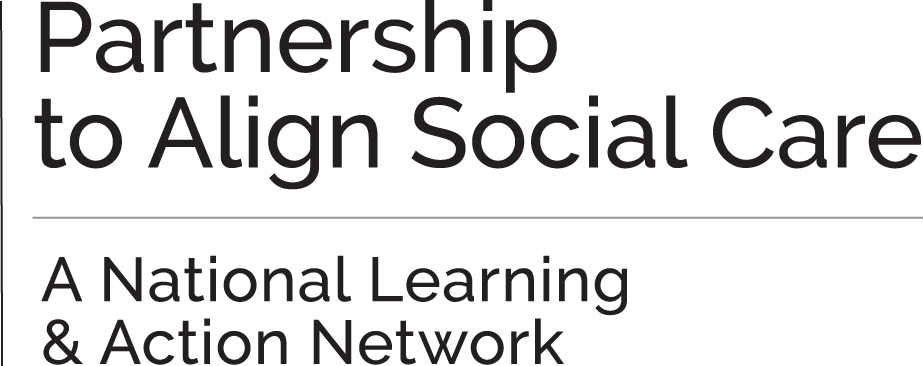Case Study
The Community organizes a set of relevant stakeholders that are interested in improving health equity, using a multi-payer alignment approach. The community-clinical teams organize in a manner to ensure there is equal power among participants to provide input and be respected in a safe, diverse teamworking environment. The relevant stakeholders organized into a CCT include at least one member from each of the following groups:
- Health System (Baylor St. Luke’s, Memorial Hermann-Texas Medical Center)
- Healthcare Provider (Baylor St. Luke’s MSSP ACO, Memorial Hermann ACO, Ibn Sina)
- Health Payer (United Healthcare, Elevance Health / Amerigroup)
- CCH/CBO (Houston Health Department/UT Health Sciences CCH – CATCH, Houston Health Foundation)
- Person with lived experience (AAA Advisory Member/Health Department Advisory member from the community)
The community clinical team reviews the data regarding Disparities-Sensitive Measures in their community. After a review of the relevant data from State and local health department resources, health system utilization data, healthcare provider data, and health payer data, the community-clinical team determines that the most relevant disparity sensitive condition impacting their community is diabetes. It is noted that persons with diabetes or at-risk for developing diabetes are not limited to only one payer age group, or population category type. The priorities set for this group includes setting the priority population as the following:
- Adults with diabetes
- Persons with gestational diabetes
- Persons with diabetes and multiple chronic conditions
- Persons with diabetes and functional impairments that limit their ability to perform activities of daily living (ADLs)
- Persons with diabetes and comorbid behavioral health or SUD conditions
A secondary priority for the Houston Community-Clinical Team includes persons in the household that are at elevated risk of developing disease:
- Childhood obesity
- Persons with prediabetes
The community-clinical team determined that the following factors are potentially impacting health outcomes for the priority population:
- Health literacy
- Limited disease self-management skills
- Food Insecurity
- Access to care
- Lack of completion of relevant health screening and preventive health measures
The community-clinical team works to define an aligned definition of health equity as it relates to diabetes risk in their community. This aligned definition recognizes that on single payer covers the universe of persons at-risk for diabetes or diabetes complications in their community. The community-clinical teams develop a list of insurers that are impacted to include the following:
- Medicare (Original Medicare, Duals, MSSP ACO population)
Medicaid (Medicaid MCOs – Texas Star, Star-Plus plans, UHC)
Medicaid Waiver (Texas Star – Plus, UHC)
Special Needs Plans (United Healthcare)
Medicare Advantage (United Healthcare MA Plan)
Commercial Insurance
Uninsured (Texas Uncompensated Care Fund)
*A multi-payer alignment strategy recognizes that the priority population will be distributed among multiple payers in the market. However, the community-clinical teams will adopt one model of care to address the needs of the population and then seek to achieve multi-payer alignment with the model of care that meets the needs of the community.
**Baylor St. Luke’s MSSP ACO and Memorial Hermann ACO participant providers are serving persons from each of the payer categories listed. A multi-payer alignment strategy supports one model of care that is driven by the needs of the community and secures alignment of the payers to the community-driven model of care.
Health Equity Goals
The community-clinical teams adopt at least one aligned health equity performance measure set, stratified by Race, Ethnicity, language and other characteristics, to assess health equity performance. The community-clinical teams will deploy a range of interventions that include addressing HRSNs for the target population in order to have documented impact to improve month-over-month and year-to-year improvement in the selected disparity-sensitive measures. Next the community-clinical teams adopt a common methodology to measure the size of health disparities and year-over-year changes. This methodology must measure disparities by self-reported race, ethnicity, and language but may include other factors such as disability status, sexual orientation, gender, and geography. The Houston team selected the following disparities-sensitive measures:
NQF# Measure Title and Measure Description
- 575 Comprehensive Diabetes Care: HbA1c control (<8.0%)
- The percentage of members 18 – 75 with diabetes who had HbA1c control (<8.0%)
- 630 Diabetes and elevated HbA1c – use of diabetes medications
- The percentage of adult patients 18 – 75 with diabetes and an elevated HbA1c who are receiving diabetes medications
- 1902 Clinician/Group’s Health Literacy practices based on the CAHPS
- Item set for addressing health literacy The item set includes the following domains: communication with provider, disease self-management, communication about medications, communication about test results, and communication about forms.
- 272/274 Diabetes Short-Term and Long-term complications admission rate
- Number of discharges for diabetes (short-term and long-term) complications per 100,000
- 285 Rate of lower extremity amputation among patients with diabetes
- The number of discharges for lower-extremity amputation among patients with diabetes per 100,000 population
Next, the community-clinical teams work to identify all of the possible root causes that contribute to health disparities related to diabetes outcomes. The root causes should include things such as the following:
- Social Determinants of Health (i.e., lack of safe, walkable communities that allow persons to maintain an exercise regimen)
- Health-Related Social Needs (i.e., food insecurity or lack of access to recommended dietary choices that meet diabetes management guidelines)
- Limited Health Literacy
- Limited disease self-management capacity
- Access to preventive health care services
Based on the identification of the root causes, the community-clinical teams work to develop a strategy to identify priority populations that are receiving services from clinical partners or have rising risk in community settings. The teams deploy one or more data population stratification strategies to target persons that are most at risk for complications related to diabetes with a particular focus on improving diabetes health disparities by race, ethnicity, language, or other priority factors. The root cause exercise must emphasize the need to establish equal power among the stakeholders in the community-clinical team to support the recognition of input from all stakeholders.
Based on the root cause identification, the community-clinical teams deploy a process to implement screening of the priority population to identify the impact of the priority factors on diabetes health outcomes to includes at least of the following factors:
- HRSN screening (Food, housing, transportation, etc.)
- Health literacy screening
- Disease self-management capacity screening
- Access to care
- Community-clinical team defines a set of interventions that will address the priority needs of the population. The set of interventions will be regularly reviewed based on the priority needs of the population and the available resources in the community to address priority needs.
- The model of care must adopt new practices that provide the following key elements:
- Person-centered care
- Culturally and linguistically appropriate care
- Collaboration with CBOs to ensure that there is a workforce to address the needs of the population that can drive culturally and linguistically appropriate care
- Ongoing monitoring to identify unintended consequences
- The model of care should incorporate a clinical integration strategy that incorporates CBOs into the delivery model. In addition, the model should include the following key elements:
- Evidence-based screening protocols for HRSNs,
- Z-code reporting of identified needs,
- Reporting and monitoring identified needs (must include tracking of race, ethnicity, and geography)
- Deploying interventions to address priority social needs (health literacy, disease self-management capacity, food insecurity, transportation/access to care, etc.).
- Reporting HCPCS/CPT codes (CHI/PIN) to capture the labor related to addressing identified needs.
- Monitoring the outcomes of the interventions at the individual and population level.
- Regular review of the outcome data to determine the impact on health disparities.
- Gathering input from diverse stakeholders on suggested methods to drive improvement year-over-year.
The achievement of community-drive health equity goals requires a community-driven strategy to blend and braid all available funding sources to meet identified health equity goals. The blending and braiding funding strategy pulls all available resources and channels these resources in a synergistic manner to drive achievement of defined health equity goals. The blending and braiding will include incorporating one or more of the following funding sources to meet the needs of the priority population, impacted by diabetes:
- Publicly funded social services (SNAP, CDBG funding, HUD-supported housing programs, USDA-supported food banks, etc.)
- State/Local Health Department programs
- CDC-Recognized Disease prevention programs (e.g., Family Healthy Weight Programs)
- Older Americans Act Services
- Aging and Disability Resource Center
- Health plan benefits**** (HCPCS CHI/PIN/MDPP/DSMES/MNT, Medicaid VBC, Medicaid Waiver, SSBCI, Supplemental benefits etc.)
- Local philanthropic resources and programs
***The identified resources should be incorporated into person-centered plans to drive improved health outcomes, with the payers aligning to the priorities set by the providers and the community partners.
****Health plan benefits are only one lever to address the needs of the priority population. It will require the aggregation of all available resources to achieve the community-driven health equity goals. The interventions driven by community partners cannot be solely funded based on health plan reimbursement; but health plan reimbursement is a key component in the overall strategy to include multi-payer alignment.
A key element is the focus on multi-payer alignment which requires the community-clinical team to partner with all payers impacted by the priority population to support multi-payer adoption of the community-drive model of care. The multi-payer alignment should include the use of Alternative Payment Models or Value-Based Care principles to support alignment to the defined model of care. Multi-payer alignment should incorporate the following elements:
- Modify contractual value-based payment requirements with payers and providers to incorporate the Advancing Health Equity through APMs guidance into new and existing APM arrangements with providers.
- Modify payers’ contracts to include measurable goals for reducing health disparities, using an aligned set of health equity performance measures (ideally across purchasers and payers).
- Adjust performance-based contract incentives to reward payers for achieving health equity goals.
- Develop and strengthen ongoing partnerships with individuals and communities to guide health equity goals and strategies.
The community-clinical team establishes baseline performance on each of the disparities sensitive measures. The group measures month-to-month and year-over-year performance on each measure and tracks for unintended consequences.
Lastly, health plans are expected to directly benefit from participating in the learning collaborative by achieving the following goals:
- Improved HEDIS performance
- Improved CAHPS scores
- Increased collaboration with community to drive HEDIS measure improvement
- Health plan partnerships with community to define and implement programs to drive towards health equity goals
- Community partnerships to support NCQA Health Equity or Health Equity Plus Accreditation
- Improvement in Value-Based Contracting goals (internal goals or Medicaid required goals)
- Identification of additional resources (public/philanthropic) to meet member health needs



